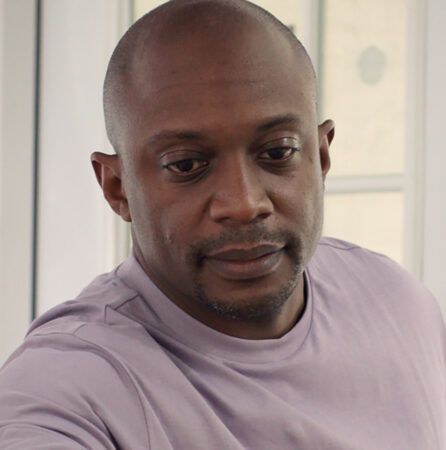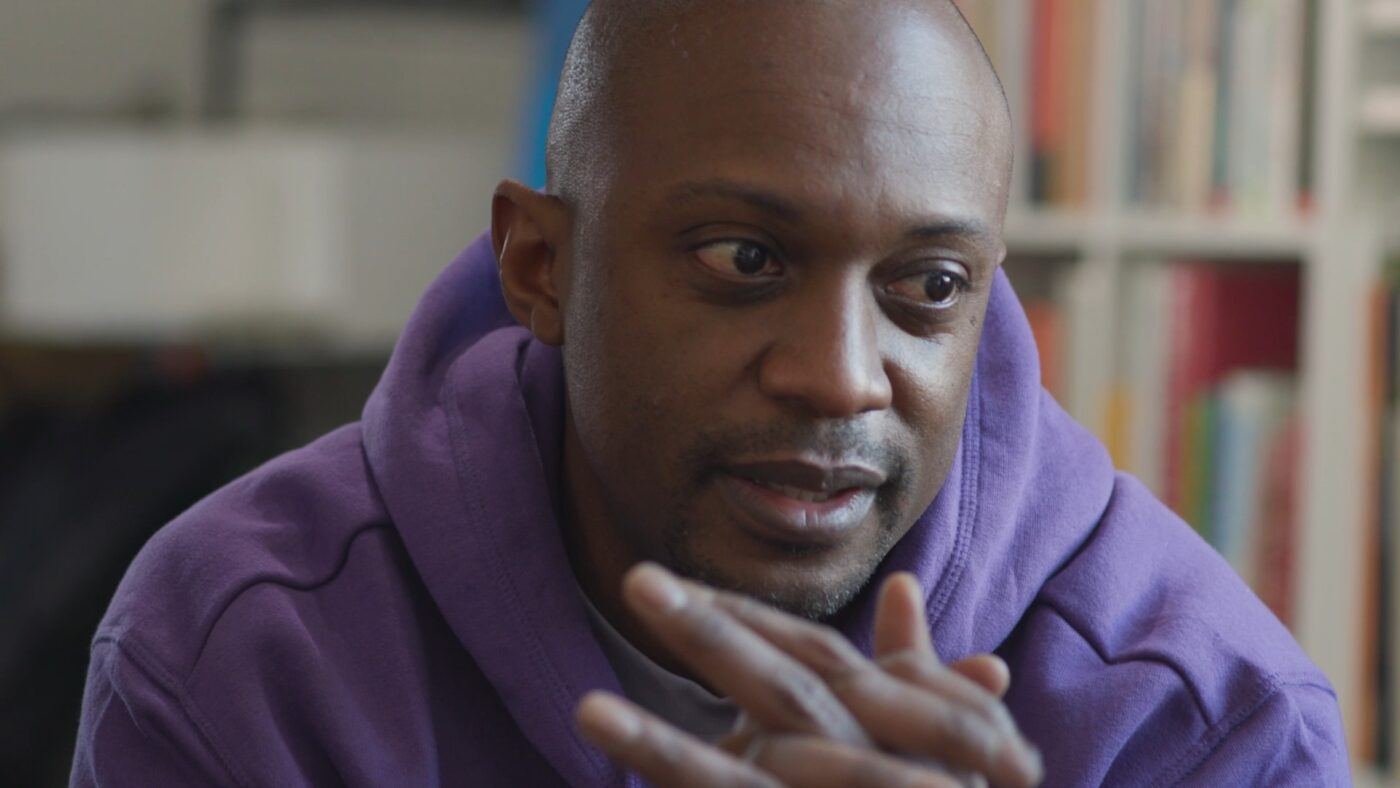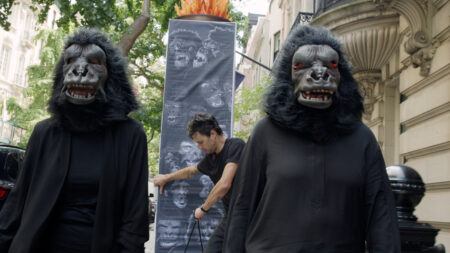Hank Willis Thomas

Hank Willis Thomas was born in 1976 in Plainfield, New Jersey, and currently lives and works in New York City. The artist received his BFA from New York University in 1998 and his MFA from California College of the Arts in 2004. Thomas’ work traces a line between the past and the present, using photography and sculpture to call viewers’ attention to how context shapes one’s understanding of the world around them. Appropriating recognizable photographs, gestures, and iconography while using a variety of strategies to move viewers with and around his works, the artist weaves together narratives that reframe the present by more fully examining our history.
Thomas began his practice as a photographer, building on his family’s long relationship with the medium. In many of his photographs, Thomas evidences an extension of the logic, aesthetics, and systems of American chattel slavery throughout American history up to the present. Branded Head (2003) and The Cotton Bowl (2011) directly reference enslavement, relating the exploitation of Black labor and Black bodies through chattel slavery to the exploitation of Black athletes, highlighting hidden or ignored connections. The artist also reflects on more recent American history in works like I Am a Man (2016) and Delta (2014), where the artist draws on images from the American Civil Rights movement, using perspective and framing to propose new readings. Throughout his practice, the artist pays close attention to brands, logos, and icons, repurposing them and deploying their symbolic power toward his own ends. For instance, in America (2021), Thomas repurposes the American Flag, tearing it apart and stitching it back together in the image of a maze, while in Guernica (2016), he weaves together basketball jerseys to recreate Pablo Picasso’s iconic 1937 anti-war painting of the same name.
Thomas’ work focuses on perception and perspective, asking viewers to literally and figuratively shift their bodies to experience a piece fully. In Freedom Riders on Colors for a Large Wall (2021), the artist prints the portraits of civil rights activists directly onto colored retroreflective vinyl. These polychromatic works reference the paintings of color field artists Josef Albers and Ellsworth Kelly, as well as the SMPTE color bars used to standardize color on North American television, asking viewers to see through systems and theories of color to access the portraits on the surface of the vinyl. In his sculptural practice, Thomas hones in on the elements and gestures within a photograph that stick with him, and renders them in three dimensions. Raise Up (2014) isolates the heads, arms, and hands of 13 South African miners subjected to a group medical examination (a moment captured by photographer Ernest Cole in 1958), which later drew a parallel to the “Hands Up, Don’t Shoot” statement that emerged from the 2014 protests after the police shooting of Michael Brown in Ferguson, MI. While investigating the connections between our past and present through his practice, Thomas works to honor the contributions and history of Black Americans, carefully navigating a critique of continued oppression and a celebration of perseverance and activism.
Videos 3
“All of my work is about framing and context, and about how, depending on where you’re standing, it really shapes your perspective of the truth, of reality, and that’s what’s important.”
Hank Willis Thomas



